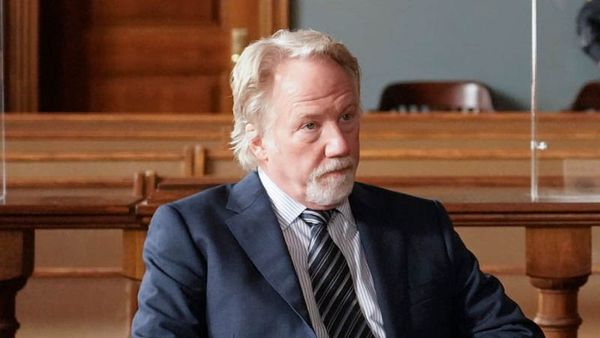
The federal government has been talking up its Future Made in Australia (FMIA) policy in recent months and more detail was revealed in Tuesday night’s budget.
Here’s what we know so far.
What did we learn about FMIA in this year’s budget?
A lot. A six-page “fact sheet” and “glossy” overview brochure laid bare the budget’s intent to deliver “Cost of living help & a future made in Australia”.
The ambition looks grand with $22.7bn earmarked over the next decade. Large chunks will be spent as production subsidies, such as $6.7bn for hydrogen produced with renewable energy and $7bn for refining and processing 31 critical minerals.
That spending mimics the tax credits offered by the much larger Inflation Reduction Act ($A557bn and counting) in the US. Given their nascent state – particularly when it comes to green hydrogen – the spending will take a few years to ramp up. The opposition treasury spokesman, Angus Taylor, has also flagged the Coalition would axe the “billions to billionaires” scheme if it gets the chance before the money flows.
Budget paper No 1 justifies the government backing of private projects like this: “In certain circumstances, targeted public investment can strengthen the alignment of economic incentives with Australia’s national interests and incentivise private investment at scale to develop priority industries.”
If Australia pulls it off, the country will “be an indispensable part of the global economy”, another budget publication states. Presumably, these industries may fill the void if coal and gas exports diminish – as they must if the world gets serious about climate action.
Some of the spending is “enabling”. There’ll be a “new front door” to streamline investment and planning approvals, that has been welcomed by groups such the Investor Group on Climate Change. A $1.7bn innovation fund, $134.2m to boost workers’ skills and a 10-year extension of the Australian Renewable Energy Agency will also aid the country’s ambition to become a “renewable energy superpower”.
Also bundled into the mix is regional support such as the $519.1m Future Drought Fund over eight years. Perhaps that’s a nod to the future of a more volatile global climate that as one of the world’s largest fossil fuel exports Australia has helped to make.
What other projects are included in FMIA?
What counts as a FMIA project was not entirely clear before Tuesday’s budget.
For instance, the $15bn National Reconstruction Fund, which is yet to approve any projects, will be part of the “whole package” even if not all of its seven priorities neatly fit the bill.
The $1bn Solar Sunshot, announced in the Hunter at the end of March, counts as one, as does the $400m in loans to Alpha HPA to deliver “Australia’s first high-purity alumina processing facility in Queensland”. So, too, does the $185m earmarked for Renascor Resources to develop a graphite mine in South Australia’s Eyre Peninsula.
The $940m investment in PsiQuantum to “build the world’s first fault-tolerant quantum computer in Brisbane” is the largest single FMIA foray.
Others are not so clear. In April, Bowen dubbed the $330m for nine industrial projects as “ensuring a future made in Australia”, although that money came from the $1.9bn Powering Our Regions fund.
The $2bn Hydrogen Headstart program, announced in last year’s budget, has also been added to the mix. “Clean, cheap renewable hydrogen is a vital part of a future made in Australia,” Bowen said this month.
In case the public thinks FMIA is only about fighting climate change, the $1bn deal with Germany’s Rheinmetall to build 100 Boxer weapon carriers for export was also counted. The pact was foreshadowed in July last year, well before FMIA emerged, and the 2024-25 budget lists $15.3m over seven years as the subsidy cost.
When did we first hear about the policy?
A future made in Australia is hardly an unusual collection of words so it’s not surprising Anthony Albanese used such a combination years ago. In January 2022, months before becoming prime minister, he visited the Hunter Valley in New South Wales.
“In everything from infrastructure and manufacturing to energy and innovation, we will champion a future made in Australia,” he said.
The PM visited the Hunter again on 28 March this year to formally launch the policy, with its clear decarbonisation theme: “I want a future made in Australia. And I want a future made in our regions. We have every metal and critical mineral necessary to be a central player in the net zero transformation and a proven track record as a reliable energy producer and exporter.”
The policy got a fuller airing two weeks later at the Queensland Press Club, including the announcement of a Future Made in Australia Act “to anchor this reform and secure this growth”.
“We will bring together in a comprehensive and coordinated way a whole package of new and existing initiatives,” the PM said of the act.
What is in the FMIA Act?
No one knows, as details of the bill aren’t public yet and it looks unlikely to meet the government’s original 1 July target date for passing parliament.
Expect it to focus on making Australia a renewable energy superpower and at least process more of the country’s resources so they don’t exit these shores “raw”. The net zero carbon transformation is one main organising theme, with economic resilience and security the other one. Australian workers and businesses are intended to be the beneficiaries, the government says – emphasising one or the other, depending on the audience.
FMIA’s wide-ranging scope means it won’t sit within a single minister’s portfolio. Instead, the PM will lead collaboration with the treasurer, Jim Chalmers, the finance minister, Katy Gallagher, the energy minister, Chris Bowen, the industry minister, Ed Husic, and the resources minister, Madeleine King.







